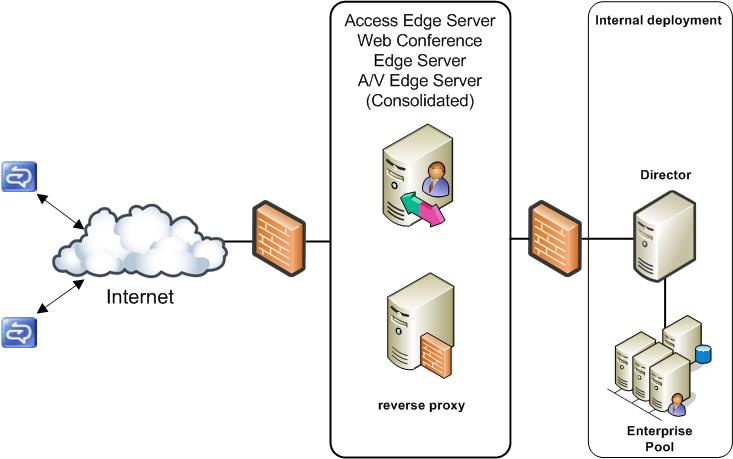The Office Communications Server perimeter network is home to three edge services, each of which handles a particular type of traffic across the corporate firewall:
- The Access Edge service, formerly known as the Access Proxy,
handles all SIP traffic crossing the corporate firewall. The Access
Edge service is required for all external user scenarios, including
conferencing, remote user access, federation, and public IM
connectivity.
- The Web Conferencing Edge service proxies Persistent Shared
Object Model (PSOM) traffic between the Web Conferencing Server and
external clients. External conference traffic must be authorized by
the Web Conferencing Edge service before it is forwarded to the Web
Conferencing Server. The Web Conferencing Edge service requires
that external clients use TLS connections and obtain a conference
session key.
- The A/V Edge service provides a single trusted connection point
through which audio and video traffic enters and exits your
network. With an A/V Edge service, users can:
- Add audio and video data to meetings with external
participants.
- Share audio and video directly with an external user
(point-to-point).
- Share their desktop with external users through the Application
Sharing Server.
- The A/V Edge service also handles audio for Enterprise Voice
for external users.
- Add audio and video data to meetings with external
participants.
For information about edge server configurations and topologies,
see
To enable conferencing with outside users, you must deploy an HTTP reverse proxy in your perimeter network. The reverse proxy manages distribution-group expansion, address book file download, and access to meeting content (such as slides) for outside users, as well as client and device software updates.
The following figure shows a generic deployment of edge servers in the Office Communications Server perimeter network.

 In This Section
In This Section
This section includes the following topics:






